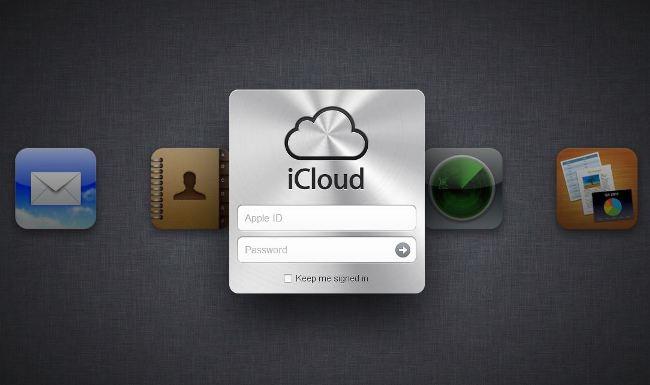What version of ios icloud came from. History of the iOS operating system: from the first version to the seventh
Many technology users are trying to keep up with progress. It so happens that it comes to the fact that some users take loans in order to purchase a new iPad or iPhone, the manufacturer of which every time tries to entice people with some pleasant trifle. But sometimes it’s not at all trifles. What, in fact, is a modern device? No, this is not a brick with the possibility of calls and not even a briefcase with a “twist”. iPhone is a device that combines not only design and dimensions, but also the operating system, technical specifications. So, here is the ios story.
Apple calls its brainchild iOS the most advanced platform for mobile devices in the world. Do you think she exaggerates? Perhaps, but the OS for tablets and smartphones is indeed a market leader. It has full multitasking, many useful functions, and also it is not demanding on the resources of the gadget. But how did this operating system come about? To answer this question, we need to get acquainted with this wonderful device and its system.
first generation iOS

First version operating system from Apple was built on roughly the same core as the Mac OS X system - the Unix kernel. But from the first minute of the presentation of the system, it became clear to everyone that the changes were enormous. No matter how innovative the iPhone was at the time of the show, its functionality was kept to a minimum. Few familiar features were implemented in the first version of iOS:
- Multi gestures, the main interface;
- Mobile browser Safari;
- Cards;
- Sync with iTunes;
- The updates include web applications on the home display;
- Store iTunes Music store.
iOS 2

The main event in the updated iOS was the launch of the store from the application - the App Store. Also, users have the opportunity to throw there third-party applications for a smartphone. Of course, such stores were not uncommon in the world of mobile technologies, but Apple fans were waiting for just such an action, because the potential of the mobile system was truly huge.
For the main competitors, such stores were not so well integrated into the devices themselves, or there were none at all. It was this poet who made this platform a market leader - now the user had access to the store right in his pocket. From an economic point of view, it was an ideal scheme that helped the company sell music and applications. Directly through the phone it became possible to buy a game or song, paying the costs with your plastic card.
From the second version of Apple's OS, the SDK appeared - a set of tools and tools with which third-party developers could create applications for the apple system. This was the most anticipated update for game makers and other programmers, who have been waiting since the first show of the first version of the Apple OS in 2007. The system itself was still closed, applications could only be installed with AppStore, it was impossible to attach many functions of the gadget to a personal computer.
Third version

Spotlight, a convenient search service, has appeared in the third OS. The search for applications, documents and files directly inside the system was implemented. The main idea of creating such a service is the introduction of instant search into devices, for this the developers added another desktop on which there was a form for entering text. Now the Apple OS has caught up with its competitors in this matter - Android, Windows Mobile, which already had a well-implemented search.
It's funny, but only in the third version there was an opportunity to send MMS, but in the middle of 2009 this function became irrelevant, since almost everyone already had full-fledged high-speed Internet. Another useful innovation is the addition of iBooks, an application that allows you to search and buy books you need for further reading on this iBooks.
iOS 4
iOS 4, which appeared in 2010 - is a more approximate version to the future - finally multitasking has appeared, albeit not fully. Now you can create folders, shortcuts and more. Users have more freedom - now there were such well-known services as Facetime, setting any images as desktop pictures. The updates already included more advanced multitasking, the ability to make an access point, game center, and other services and applications known today.
It was the fourth version that added the ability to make a real modem out of the device. Now the user could distribute the Internet to other devices - this was a real breakthrough in technology. Only after him apple users understood what they were holding - almost a computer.Multitasking also expanded the freedom of users, and also significantly reduced the time it took to work with files, applications - the user could easily skip between them, track the latest actions, etc.
Fifth OS

The fifth iOS can also be called revolutionary, because such popular and useful serviceslike iCloud, iMessage and Siri. Also now the weather was available directly in the device. In the fifth version, the developers finally caught up with their main rival Android, adding important information such as weather, air temperature and location to the home screen.
Apple also tactfully borrowed an interesting technology from Black Berry, which allows you to exchange instant short messages between gadgets with the same operating system. Now we know her as iMessage. It was free initially on all Apple products.
Another major innovation is the appearance of iCloud - one of the most interesting options for saving and moving data. Apple tried to expand the functionality of storing data on remote servers. And she did it very well. iCloud justified, which proves today.
iOS 6

As for the sixth version, then in it the main changes were aimed at optimizing the system. But there were pleasant trifles, which not everyone will remember now. These include panoramic shooting, an electronic clock, the Do Not Disturb function, as well as updates for Siri's electronic assistant. Updates had a good effect on the stability of the system, as well as its optimization.
Seven
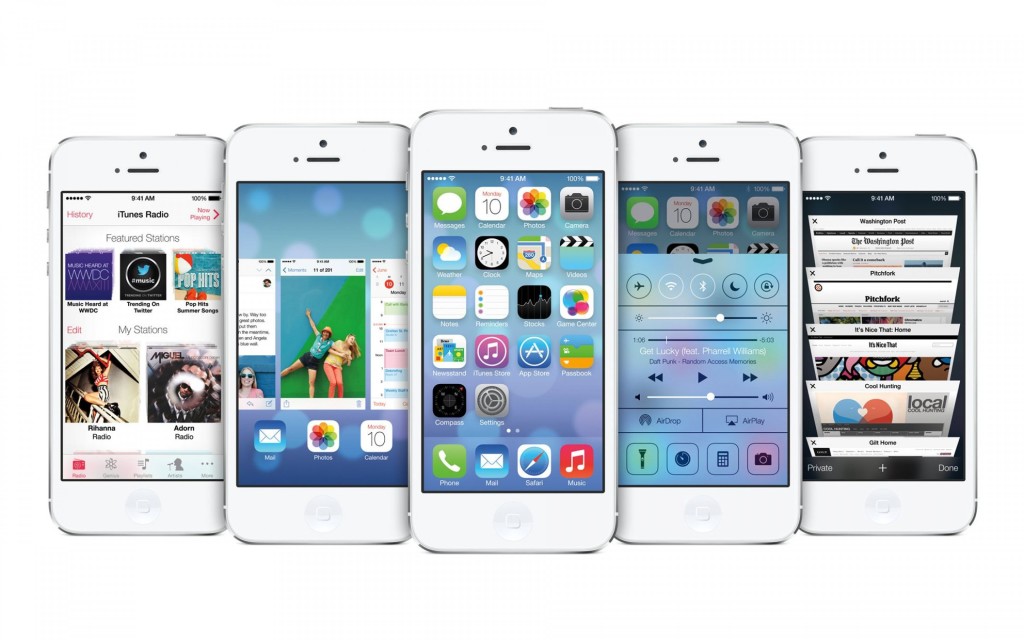
Most likely they know what happened at the end. iOS 7 brought a new minimalistic design, the ability to secure your device with Touch iD - fingerprint unlock, and much more. For example, the revolutionary DropBox service, which allowed the exchange of content between people with apple technology.
Many argue that the "seven" is the peak of evolution. But the creators of Apple do not agree with users. This can be understood because the developers are preparing to release the eighth version.
Recently, it has only been heard about “cloud” technologies. More and more users are abandoning the local storage of large amounts of data, transferring them to the "cloud" storage, which turned out to be extremely convenient when used at home.
Of course, Apple couldn’t stay away from this “celebration of life”. Moreover, due to its own "clouds" the operation of many devices from this manufacturer is provided. Of course, we are talking about iCloud. What it is? This article will be discussed in our article.
Basic concepts
We’ll tell Apple now) - a free 5 GB cloud storage that stores files of all the happy owners of technology from the glorious city of Cupertino. Now we’ll take a closer look at the service’s work and find out how it makes all work with Apple devices easier and more productive.
Practical functions
As in many cases, one way or another connected with the creation of the deceased, the real purpose of the "cloud" is to connect all the used gadgets into a single ecosystem. In fairness, it is worth noting that in many respects this linking is artificial, but it does not cancel convenience and irreplaceability.
In addition, the iCloud locked option is of great importance (what it is, we will talk later).
Examples of using
Imagine that you photographed something very interesting on your iPhone ... and the photo at that very moment (well, almost at the same time) appeared on your iPad or Mac. If you know something about the “clouds”, then you yourself have guessed about the mechanism of such a wonderful phenomenon: the smartphone sent the photo to iCloud, from where other devices downloaded it. Of course, all participants in this network should be connected to the Internet, and it is desirable to have the quality of the channel as acceptable as possible.
But do not assume that such a convenient synchronization applies only to photographs. It is just as simple and fast with respect to the history and bookmarks in the Safari browser. But even better is the fact that even application settings are synchronized. At this point, Windows and Android users can only dreamily breathe, since in these OSs such actions are supported by only a small number of programs.
What will be synchronized using the "cloud"?
Let’s give a complete list of content that can be used on all devices thanks to the capabilities of Apple iCloud (what you already know):
- audio and video files, as well as books and recordings of TV programs;
- videos and photos that you took on the camera of your iPhone / iPad;
- all settings of your devices;
- full data and application settings, including saving to games and other minor trifles;
- even the iOS desktop (more precisely, its settings) is stored in the "cloud";
- messages from all your devices
- ringtones.
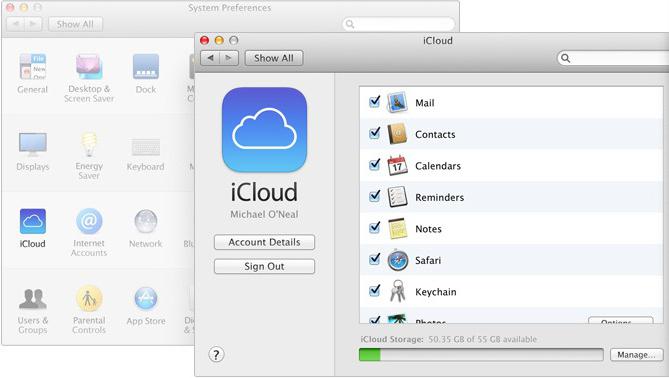 It was not by chance that we mentioned saves for games, since the possibility of synchronizing them became a huge joy for mobile game lovers. They can easily start playing some Minecraft on the iPhone in the subway, pause the application, and then continue crafting, sitting at home with the iPad.
It was not by chance that we mentioned saves for games, since the possibility of synchronizing them became a huge joy for mobile game lovers. They can easily start playing some Minecraft on the iPhone in the subway, pause the application, and then continue crafting, sitting at home with the iPad.
Important differences from other similar services
You can probably ask a question about why all this is necessary. After all, now there are a huge number of similar services. The same Dropbox, for example. The fact is that working with them is convenient, but for each program you have to manually set preferences for saving the results of work in the Cloud. If you want to do something similar for the results in games or other applications, then you can’t do without dancing with a tambourine.
We already learned) works according to a completely different algorithm. You generally do not have to think about where the application will save its files. In the case when the utility developer has included the ability to use the "cloud" from Apple in his program (and for iOS and OSX this is almost always the case), it will automatically send all its data there. Thus, thinking about preserving the fruits of your efforts is no longer necessary.
Let's give an example. If approximately a month after the launch of the iCloud project, its support was announced in only a few percent of applications, then only six months after that it was already available in almost all new versions of programs. Once again it is worth recalling that the project owes much to this result not so much with the enthusiastic support of the developers, but with the artificial policy of the Apple leadership.
Where to download iCloud?
iCloud doesn’t need to be downloaded specifically, as this service is already integrated by default in all new Apple OSs. If for some reason you have not yet updated, just download all the currently available updates, with which iCloud will definitely come to you. What kind of program is this, you now know. Is it possible to use it if you prefer a PC running Windows?
Windows users
If you work with “windows”, you will have to perform a little more body movements. You must download iTunes for Windows, so that you have the opportunity to synchronize data with your Apple-gadgets.
How to register?
In this case, everything is as simple as possible. You don’t have to go through a separate registration procedure, so lazy users will surely like iCloud. Signing in to your account is as simple as possible: use your Apple ID with which you go to the App Store.
How much disk space does the company allot?
Note that by default, each user receives a modest 5 GB. Important! This amount is reserved exclusively for every little thing, like program settings, save games and other minor data. Your photos are not at all constrained, there are no restrictions on the place for their storage in principle. But! Only the last thousand photos of the last 30 days are stored in this way.
If you have few 5 GB offered by default, then at any time you can buy more. Funds will be automatically debited from your bank card, which is tied to a specific Apple account.
Mobile setup basics
As in other services and programs for Apple devices, the setup is not difficult. We follow the path "Settings / iCloud". Of course, then you will need to enter your Apple ID. Double check that the data is entered correctly, because in case of any errors you will not be able to use the service!
 In the main dialog box that opens after this, you can see a list of those applications that are allowed to save all their files and settings in the "cloud". By the way, if someone is interested in mail on the @ me.com domain, then the corresponding mailbox is easily created in the same window: just enter a free nickname. You do not need to invent a password. The fact is that as such will be used identification data from Apple ID.
In the main dialog box that opens after this, you can see a list of those applications that are allowed to save all their files and settings in the "cloud". By the way, if someone is interested in mail on the @ me.com domain, then the corresponding mailbox is easily created in the same window: just enter a free nickname. You do not need to invent a password. The fact is that as such will be used identification data from Apple ID.
In general, this ID is your virtual “keychain”. iCloud (what we already know) is no exception to this.
Among other things, in the same window you can see statistics on the distribution of 5 GB of free disk space allocated to you. Here, additional space is also acquired if all the previously allocated space has already been occupied.
By following the path: “Settings / iCloud / Storage and backups / Storage”, you can select any device. Clicking on its icon will open you with a list of all programs that synchronize their settings with the cloud. By default, almost all applications do this, and therefore it makes sense to disable unnecessary ones, thereby saving free space on the server.
Important! The developers provided that all procedures for back up are executed only when your device is idle (the display is locked) and is within the Wi-Fi network. Of course, this process can be started manually at any minute.
Setup on Macs
There are no differences from the above procedure. All transitions are made in the same way. You can also configure permissions for specific programs. Given the size backups for some "large" applications, this is justified.
By the way, how do i change iCloud? Suppose you transfer your tablet to a friend, and that one needs to connect to your account. It is very easy to do. Go to "Settings", go to iCloud, and then select "Change iCloud account." How to change the account, you now know.
Do not forget only that you should not give access to your device to unauthorized users, as they can gain access to your personal data.
"Photostream"
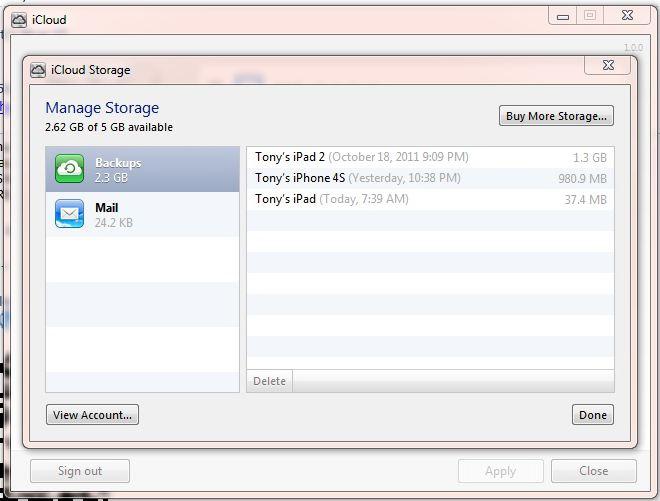 The Photo Stream feature is likely to be extremely useful for active users of Apple's gadgets. If anyone does not know, then it is designed to automatically synchronize all photos and screenshots taken using your iPhone or iPad. To activate this option, go to the "Settings / Photos" path.
The Photo Stream feature is likely to be extremely useful for active users of Apple's gadgets. If anyone does not know, then it is designed to automatically synchronize all photos and screenshots taken using your iPhone or iPad. To activate this option, go to the "Settings / Photos" path.
Important! If you decide to disable “Photo Stream” after the files have been downloaded to the device, all of them will be deleted. True, and copies remain in iCloud.
By the way, is it possible to make sure that all the films and music you bought immediately appear on all your devices? Implementing this is extremely simple. To do this, just go to "Settings / Shop", and then check the necessary items with checkboxes. To do the same on PC, you need to open iTunes, go to Settings, then go to the Store. As in the previous case, it is necessary to note the corresponding points.
ICloud Web Version
By going to the official website of the service, you can use the web version of the application. To access your files, you will again need to enter your Appe ID, which will be verified on iCloud.com. What does it mean? Just the application will contact the central server, and then verify the authenticity of your credentials.
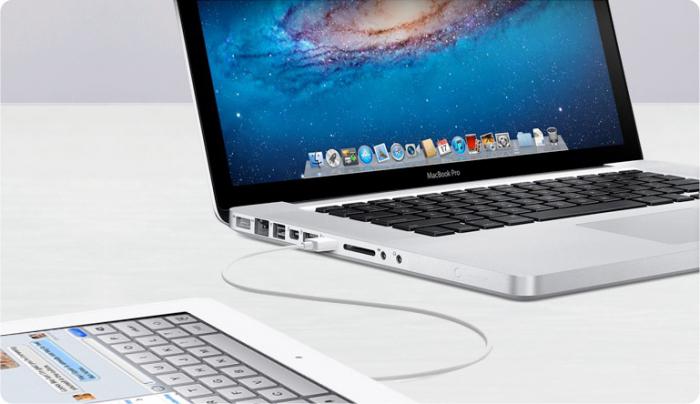 It often happens that web-based versions of computer applications have significantly less functionality when compared to “large” releases. I am glad that in this case this is not at all the case. On the contrary, all programs are almost identical to those used in the iPad and iPhone. And this concerns not only their appearance, but also functionality. By the way, there is one function that should be discussed in more detail. It is about the Find My iPhone option, thanks to which attackers have recently blocked thousands of Apple devices around the world.
It often happens that web-based versions of computer applications have significantly less functionality when compared to “large” releases. I am glad that in this case this is not at all the case. On the contrary, all programs are almost identical to those used in the iPad and iPhone. And this concerns not only their appearance, but also functionality. By the way, there is one function that should be discussed in more detail. It is about the Find My iPhone option, thanks to which attackers have recently blocked thousands of Apple devices around the world.
Find My iPhone Service Description
Go to Settings / iCloud on your mobile device or Mac. Carefully look at the list of options: if there is a checkmark on the “Find iPad / iPhone” checkbox, then through the web service you can monitor the location of your smartphone or tablet at any time. This is the best solution for those people who often travel on business, and therefore often risk losing their equipment and data as a result of their intentional theft.
The real salvation may be just the same iCloud locked function. What it is? Information about the position of the gadget is taken from the GPS sensor. In addition, the location can be determined by any Wi-Fi point that is within reach. If your device has been stolen or lost, you can either send a message asking to return the smartphone, or completely block it.
But how to unlock iCloud if you become a victim of intruders? In this case, we recommend that you contact Apple technical support immediately. They respond instantly, and control of the device is returned subject to answers to some control questions.
Important! Even if the device is not currently online, you can send a request for blocking. When an attacker goes online, the smartphone or tablet will be blocked. You will receive a notification in your mail about the successful completion of the device lock. That's what the iCloud locked option is for. What it is, you already know.
ICloud innovations
Only the lazy in recent years did not reproach Apple for excessive conservatism. And there were reasons for this. The main reason that irritated users was the company's unwillingness to allow access to the file system of its devices. It is finished! In a recent presentation of iOS 8, support for the normal file system was finally announced, which will include the fact that iCloud files will now be laid out freely, without any connection to a specific program. 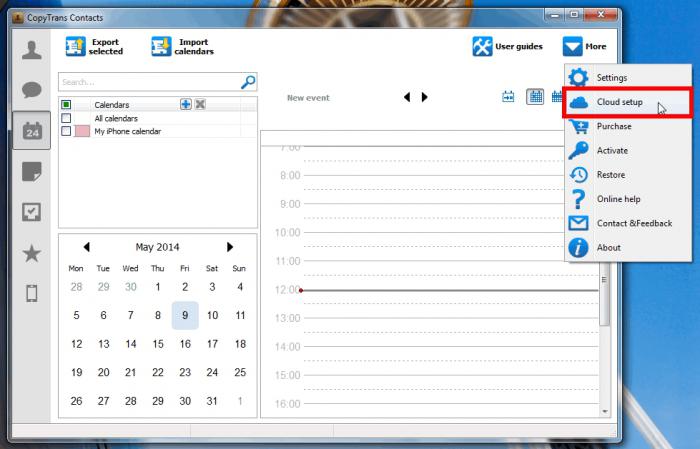
It is too early to talk about the prospects of such an innovation, but users will obviously like it.
Can i uninstall iCloud?
To conclude this article, let's talk about this. Suppose you are no longer a user of Apple products. Accordingly, there is no need for iCloud. in this case it’s easy.
Go back to “Settings”, go to iCloud, look for the item “Delete account”. You need to understand that in this case you completely erase not only the settings of the applications you used, but also all your personal files.
To view a list of devices with iOS (iOS 8 or later), Mac computers (OS X 10.10 or later), Apple TV devices (3rd generation or later), and the Apple Watch that are running Sign in to iCloud using your Apple ID, which is used to sign in to iCloud.com. In addition, you can mark your Apple Watch as lost and remove the device that you no longer own.
View devices
If it is a watch with watchOS 2, remove it by following these steps.
If you are still looking for an Apple Watch with watchOS 2 and have an activation lock on, do not delete it, but mark as lost . In this case, to re-activate and use the Apple Watch, you will need to provide an Apple ID and password. If the activation lock is enabled on the Apple Watch and you did not mark this watch as lost before deletion, then when you delete the watch, the activation lock will be disabled. This feature helps in situations where the Apple Watch with watchOS 2 was sold or donated, but the previous owner forgot to disable activation lock on them.
In addition to deleting from an iCloud device with an iOS or Mac, you can also delete in the application “Find iPhone” , in iCloud settings on your Mac or in Settings\u003e [ your name]\u003e iCloud (or Settings\u003e iCloud) on your iOS device.
If you remove the device from iCloud and reconnect the device to the Internet, it will again appear in the “My devices” section of the “Settings” page.
If one of your devices does not appear, make sure that it iCloud service configured using the Apple ID used to log in to iCloud.com. If you are using an iOS device, make sure that it is running iOS 8 or later. If you are using a Mac, make sure it is running OS X 10.10 or later.

